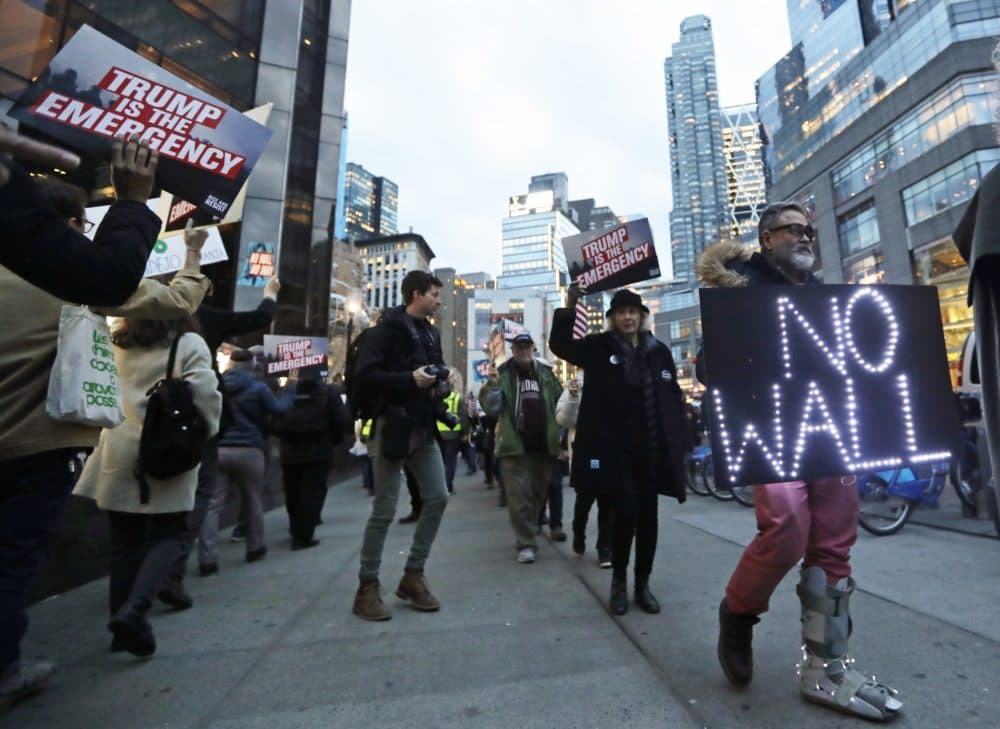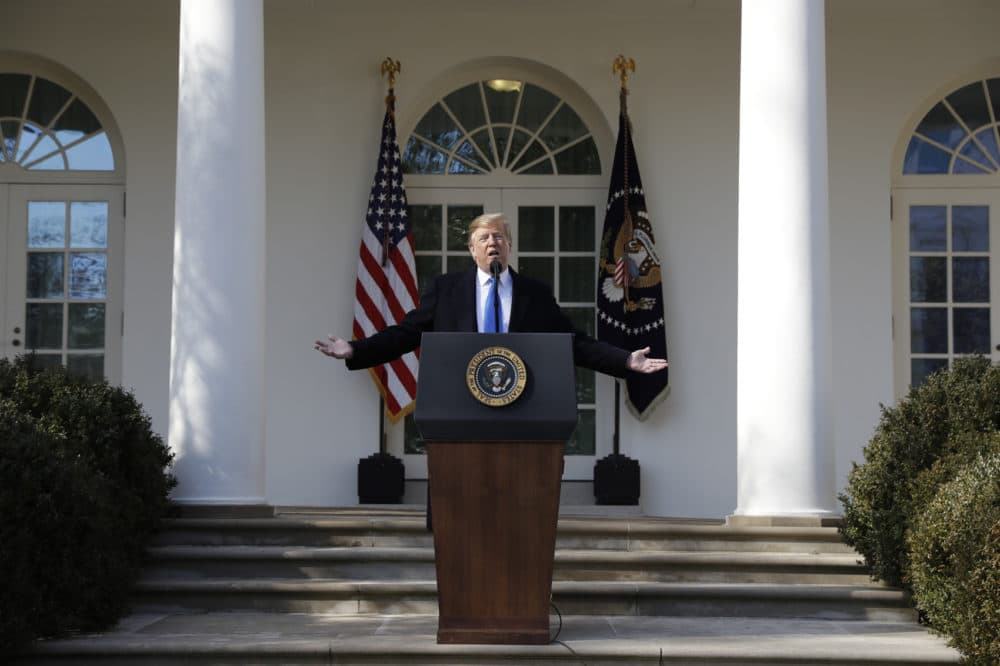Advertisement
Commentary
Precedent Doesn’t Favor Trump’s Emergency Declaration. But What Happens Next Is Anybody’s Guess

“Our country faces a grave danger ... These are not normal times, these are times of crisis ... I would not be faithful to my responsibilities as president if I did not use every effort to keep this from happening.”
After two years of the Trump soap opera, we know the real message behind such statements: “I’m not getting my way.” But the words above were spoken by Harry Truman in 1952, and he was talking about the threat of a strike at U.S. steel mills in the midst of the Korean War.
Truman issued an executive order directing his secretary of commerce to seize the steel mills and ensure continued production of war materials. The resulting U.S. Supreme Court case, Youngstown Sheet and Tube Company v Sawyer, rejected Truman’s authority to seize the mills — and has been a staple in constitutional law courses ever since.
As another chapter of our current national tragicomedy unfolds, Youngstown has been getting a lot of attention. That decision doesn’t favor Trump’s claim that refugees seeking asylum (as provided by U.S. law and epitomized by our history) justify the use of emergency powers. But in our politicized Supreme Court, it doesn’t guarantee that his declaration of national emergency will be invalidated.

Sixteen state attorneys general (not including Massachusetts Attorney General Maura Healey) have already filed suit in federal court. That suit is joining others from organizations including the Center for Biological Diversity, the Border Network for Human Rights and the American Civil Liberties Union. Private landowners and natural preserves have joined the fray as they face the specter of eminent domain and elimination of wildlife habitats.
So what can we expect? One part of the administration’s argument will be that Youngstown rejected the seizure of private property, while Trump claims something quite different — the power to transfer federal funds from other programs. (He has already cast an acquisitive eye on Pentagon funds and funds appropriated for disaster relief in Puerto Rico and California.)
Democrats will respond that by reversing previous legislative appropriations, Trump is violating the separation of powers contained in Article I of the Constitution. If Youngstown teaches that emergency powers cannot justify seizing private property, that principle surely applies in spades to upending the three-branch structure of our federal government.
Advertisement
[Judicial] deference, however, is not the same as judicial abdication
Separation of powers cuts both ways, however. The president, as executive, enjoys substantial deference in any judicial review of his declaration that a crisis exists and he has broad latitude in selecting measures he deems necessary to national security. That deference was emphasized by the Supreme Court last June when it upheld Trump’s travel ban in Trump v Hawaii.
Deference, however, is not the same as judicial abdication. The situation that the president calls an “emergency” — an influx of migrants on our southern border — has not only existed since at least 1980, it has vastly diminished in scope in the past several decades. Between 1 and 1.5 million illegal entries were reported in the early 2000s. In 2018, by contrast, border apprehensions totaled roughly 400,000.
A cursory review of the facts reveals that Trump’s “emergency” was spawned by a 2016 campaign applause line and revived as a 2018 midterm electoral strategy. Trump himself suffered an unusual attack of honesty in the Rose Garden, where he delivered history’s all-time most bizarre announcement of an emergency: “I could do the wall over a longer period of time. I didn’t need to do this. But I’d rather do it much faster.” (Emphasis added.) So long as the Supreme Court employs even a scintilla of intellectual honesty, it cannot turn a blind eye to the public record.
In 1976, Congress passed the National Emergencies Act, explicitly authorizing by statute the power that Truman claimed to be inherent in the office of the president. Since that time, at least 58 national emergencies have been declared, a figure that Trump and his supporters have cited in his favor.
... the president’s powers are at their weakest when he acts in defiance of Congress
Unfortunately for the administration, not one of these has witnessed an attempt to apply funds in a manner previously considered, and rejected, by Congress. The Youngstown decision noted that the president’s powers are at their weakest when he acts in defiance of Congress. This alone should elicit rulings from conservative and liberal justices that Trump has unconstitutionally usurped the Congressional power of the purse.
Still, there is another complicating factor in the form of Mitch McConnell. McConnell, lacking adherence to any principle other than politically expedient self-dealing, has endorsed the president’s declaration, apparently in trade for Trump’s signature on a deal to keep the government open — thereby preventing further damage to GOP reelection prospects.
In this wilderness of mirrors, McConnell’s capitulation allows Trump to claim that Congress actually appropriated far less for the wall than it deems necessary.
Meanwhile, House Speaker Nancy Pelosi has announced a Democratic plan to introduce a bill to reverse Trump’s declaration of emergency; that bill must be considered by the House in no more than 18 days. Thereafter the same timetable is repeated in the Senate. McConnell could either try to slow down the Senate’s consideration, or corral enough subservient Republicans to defeat its passage. Either way, the question of Congressional intent has been put in play.
As with the travel ban, the federal court system will be called upon to consider the legality of Trump’s declaration. And despite the makeup of the recently refashioned Supreme Court, it is not easy to predict how these arguments will fare, or how the case might be decided.
These days, Chief Justice John Roberts is ever more frequently required to choose between his ideological preference and the Court’s dwindling reputation. This is, after all, the “Roberts Court.”
Roberts should be indeed concerned about a precedent endorsing the uninhibited use of emergency declarations whenever a budgetary dispute arises between the president and Congress. And, in truth, that is all this tempest in a teapot is really about.
